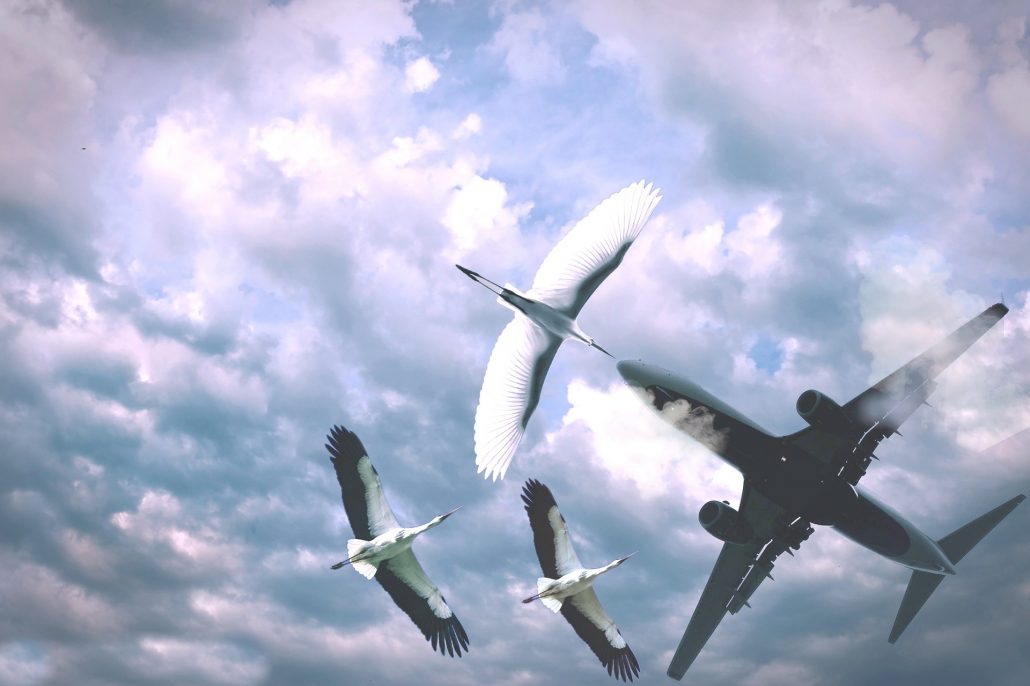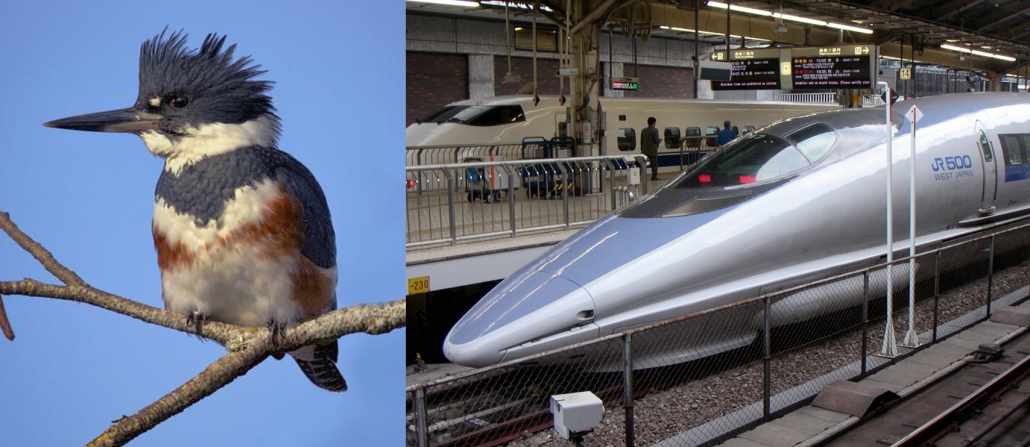Michael Montier: November 2018 Birder of the Month
/by Aaron SidderBiomimicry: Emulating Birds & Nature

Image: Pixabay
Many companies are turning to nature for inspiration for tackling the world’s challenges. By mimicking natural designs millions of years in the making, we are learning how to reduce energy consumption and resource depletion, implement self-regulating cleaning methods, and advance technology in new and creative ways.
Innovation based on the designs found in nature is referred to as biomimicry. Biomimicry is a relatively new field of study that is enticing engineers, biologists, and conservationists to work towards a common goal of overcoming technological challenges and maintaining global sustainability.
When attempting to solve a problem, such as the booming sound caused when a Japanese bullet train blasted away from the station, researchers sought solutions in the animal kingdom. In the case of the bullet train, engineers reshaped the nose of the train to emulate a kingfisher, which allowed it to enter the station soundlessly, like a kingfisher diving into the water after its prey. This modification to the structure of the train also reduced the energy use of the train by 30 percent.

A Shinkansen 500 series train pulls into Japan’s Tokyo Station. The shape of the train’s nose was inspired, in part, by a kingfisher’s bill. Credits: A belted kingfisher (Megaceryle alcyon), courtesy of Michael Liskay via birdseye.photo. A Shinkansen 500 series train, via Wikimedia Commons.
Another example of how birds can offer insight into reducing energy use is happening in the world of aeronautics. Scientists have discovered that birds flying in a V-shape reduces the amount of energy that is being exerted by each individual bird. When a bird towards the front of the V flaps its wings, it creates an updraft, lifting the bird behind it. The birds within the group rotate so that each has the opportunity to work harder for the group by being in the front while also having a chance to rest in the back of the formation.
A group of researchers at Stanford University are planning a study that will follow commercial airliners on transcontinental flights while they fly in a V-formation with other airplanes. Their hypothesis is that the jets will use 15 percent less fuel when they simulate the pattern of birds, as opposed to flying alone.
Biomimicry can also be built into our architectural designs by nurturing mutually beneficial relationships found in nature. Birds have symbiotic relationships with many different animals, including horses. Birds feed on the insects that plague horses, while horses offer a safe resting spot and nest building materials for birds. Sustainable barns that offer numerous natural entrances can benefit both domesticated animals as well as the wild ones with whom they interact.
By implementing changes such as the Japanese bullet train and jetliner examples, humans are creating change that reduces fossil fuel consumption and improves industrial design. However, there are always problems with innovation. Humans are bound to make errors in our attempts to mimic nature. Wind turbines, a valuable renewable energy resource, imitate the shape of an owl’s wing to improve energy efficiency, but the reduced noise and ease with which they slice through the air have made them more lethal to bird populations. As we move forward in our innovation and face technological challenges, we must look further into the future and the impact that biomimicry may have. We must support innovation that benefits from nature, but more importantly, we must support innovators that benefit nature.
The ways in which we can learn from birds could be endless and found in the depths of remote places like the tropical rainforests of Asia and South America. During your next birding session be sure to look for other ways we could be using knowledge about birds to solve technological challenges.
Read more by Avery Phillips on Medium and follow her on Twitter.
Dan Tallman: September Birder of the Month
/by Aaron SidderRare Bird Alerts come to Android!
Finding rare birds in your area is one of the most exciting aspects of birding. Now, with the BirdsEye Rare Bird Alerts, you can have your own portal to notable birds being seen nearby (anywhere in the world) as well as the rarest birds being reported across North America. If the update hasn’t automatically downloaded to your device yet, it should be available for you to download in the next couple days.
NOTABLES
Rare Bird Alerts shows you notable birds being seen nearby (up to 250 miles away from your current location if you are a member). These sightings are flagged by eBird as out of range, or out of season. Each alert also has a direct link to the eBird checklist to see comments and photos that the observer included in the checklist.
ABA RARITIES
Additionally with a membership, BirdsEye provides all the true rarities being seen through out the ABA region*. This includes recent species like Sinaloa Wren in Arizona, Slaty-backed Gull in Washington, and Common Snipe in Newfoundland.
There are still a few differences between the Android and iPhone versions of BirdsEye. We’re trying really hard to make sure the same great features are in both versions. We’ve made a major step in that direction with the addition of the Rare Bird Alerts. Look for more to come.
*The ABA (American Birding Association) area covers most of North America north of Mexico. The BirdsEye ABA Rare feature includes species with ABA codes 3, 4 and 5.
No products found which match your selection.
